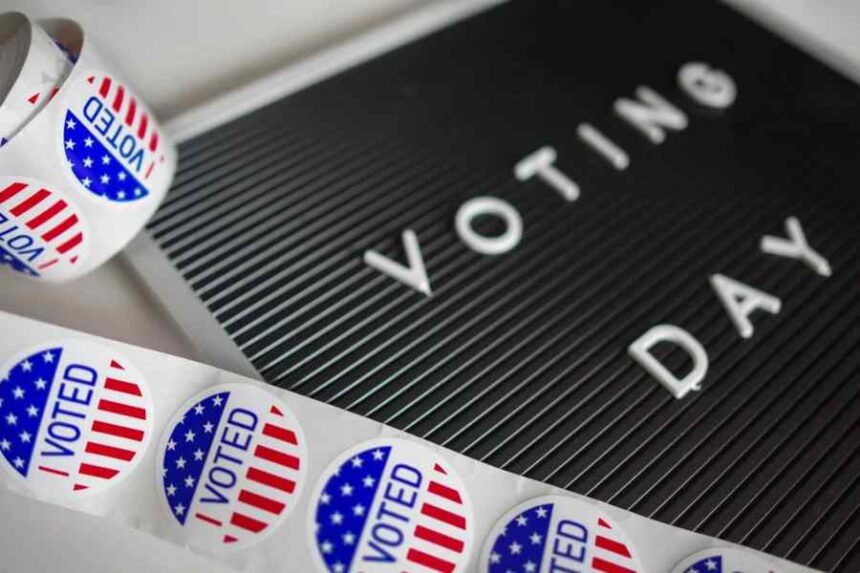The 1916 U.S. presidential election was one of the most significant in American history, with the outcome shaping the nation’s political landscape during a time of great change. Who won the election of 1916? This election saw the re-election of President Woodrow Wilson, defeating Republican challenger Charles Evans Hughes. While Wilson’s victory was pivotal, the 1916 election was far more than just a contest between two political figures—it reflected the political tensions of the era, including issues surrounding World War I and progressive domestic reforms.
- Background to the 1916 Election: A Nation at a Crossroads
- The Candidates: Woodrow Wilson vs. Charles Evans Hughes
- The Key Issues in the Election: War, Reform, and Economic Security
- The Election Results: Close Yet Decisive
- A Tight Contest on Election Night
- Wilson’s Stronghold in the South and West
- The Final Tally: A Narrow Win
- A Reflective Election
- The Significance of the 1916 Election: A Turning Point in American Politics
- Wilson’s Victory and Its Impact on U.S. Politics
- A Stance of Neutrality Amid Global Conflict
- The Rise of the Progressive Movement
- Shaping Future U.S. Policy
- Conclusion
- FAQ’s
Wilson’s success was largely attributed to his leadership during the early years of the First World War, his progressive domestic policies, and his appeal to a broad coalition of voters. However, the election also highlighted deep divides in the country, particularly regarding how to handle the war in Europe and the role of government in economic regulation. In this article, we will delve into the details of the 1916 election, exploring the candidates, key issues, and the political environment that led to Wilson’s victory.
By examining the strategies, key players, and electoral dynamics of the 1916 election, we can better understand how it shaped both American politics and the nation’s role on the world stage.
Who won the election of 1916?
In the 1916 U.S. presidential election, President Woodrow Wilson won re-election against Republican challenger Charles Evans Hughes. Wilson’s victory was largely driven by his stance on keeping the U.S. out of World War I, his progressive domestic agenda, and his appeal to voters in key states. Despite a close race, Wilson’s support from key regions, including the South and West, secured his second term in office.
Background to the 1916 Election: A Nation at a Crossroads
In 1916, the United States was in a period of political, social, and economic transformation. President Woodrow Wilson had been in office for nearly four years, and the country faced a complex international situation, particularly with the looming shadow of World War I in Europe. The election was not just about domestic issues; it was also about how the U.S. should engage with the wider world.
Woodrow Wilson’s First Term
Wilson’s first term had been marked by significant legislative achievements, including the Federal Reserve Act, the Clayton Antitrust Act, and the establishment of income tax laws. His progressive reforms, which were designed to reduce the power of monopolies and empower working Americans, earned him widespread support, particularly among progressives and workers.
The War Abroad
While Wilson had campaigned for neutrality in the 1912 election, the world’s descent into war in 1914 created a new set of challenges. By 1916, the U.S. was deeply divided on how to respond to the war in Europe. While Wilson advocated for peace and neutrality, some factions of the public were increasingly swayed by the pro-war stance of his Republican challenger, Charles Evans Hughes.
The Republican Party’s Strategy
Hughes, a former governor of New York and a former associate justice of the U.S. Supreme Court positioned himself as a leader who would strengthen America’s stance on the international stage. The Republican Party hoped that a platform focusing on the need for greater preparedness for war would attract voters concerned about global security.
The Candidates: Woodrow Wilson vs. Charles Evans Hughes
Woodrow Wilson’s Campaign
Wilson ran on a platform of peace, progressive reforms, and keeping the U.S. out of World War I. He positioned himself as the protector of neutrality, arguing that American interests would be best served by avoiding involvement in European conflicts. Wilson’s slogan, “He Kept Us Out of War,” was effective in appealing to the large portion of the population that did not want to get involved in the global conflict.
Charles Evans Hughes’ Campaign
Hughes, the Republican candidate, argued that Wilson had failed to adequately prepare the U.S. for the challenges of the modern world. He advocated for stronger military preparedness and a more proactive role in international affairs. His campaign was characterized by a more hawkish stance on foreign policy, although Hughes was not openly advocating for war.
The Battle for Key States
The election was marked by a fierce battle for key swing states, particularly in the Midwest. Both candidates focused heavily on Pennsylvania, Ohio, and California, where the industrial base and large immigrant populations were key to the outcome.
The Key Issues in the Election: War, Reform, and Economic Security
The 1916 election revolved around several critical issues, each of which shaped the debate and divided the electorate.
- World War I: The most significant issue was the ongoing conflict in Europe. Wilson’s policy of neutrality was challenged by those who believed the U.S. should take a more active role in the war.
- Progressive Reform: Wilson’s legislative achievements, including financial and labor reforms, were widely supported by progressives and Democrats. Hughes also endorsed progressive policies but was seen as less committed to the depth of reform Wilson proposed.
- Economic Concerns: The growing power of big business, economic inequality, and labor unrest were ongoing issues. Wilson’s progressive policies aimed to address these concerns, while Hughes’ proposals focused more on stabilizing the economy through stronger regulation.
The Election Results: Close Yet Decisive
A Tight Contest on Election Night
The 1916 presidential election was one of the closest in U.S. history, with the outcome dependent on a few key battleground states. The race was particularly tight as both Woodrow Wilson and Charles Evans Hughes fought fiercely for the support of undecided voters. Wilson’s progressive policies, which focused on social reforms and economic regulation, resonated strongly with voters in the South and West, where his platform of change aligned with the needs and desires of these regions. However, Hughes, despite his strong challenge and support in other parts of the country, was unable to capture enough critical states to secure a win.
Wilson’s Stronghold in the South and West
Wilson’s victory was significantly influenced by his strong performance in Southern and Western states, where his progressive reforms had garnered substantial support. His promises of economic reforms and labor rights appealed to voters who were seeking greater protection against monopolistic practices and corporate greed. These regions, which were often overlooked in previous elections, showed overwhelming support for Wilson, giving him the edge in securing the necessary electoral votes.
The Final Tally: A Narrow Win
When the final votes were counted, Wilson emerged victorious with 277 electoral votes to Hughes’ 254. While Wilson’s electoral victory was clear, the popular vote was extremely close, reflecting the nation’s division on key issues such as war and reform. Wilson secured 49.2% of the popular vote, while Hughes garnered 46.1%. The slim margin highlighted the deep political and ideological divides within the country, with each candidate appealing to different segments of the population. Wilson’s victory signaled the continued influence of the progressive movement, while Hughes’ close performance demonstrated the growing appeal of conservative and pro-war sentiments in certain parts of the electorate.
A Reflective Election
The 1916 election served as a microcosm of the political and social divisions of the time. The result, although close, underscored the widespread support for Wilson’s vision of a more progressive America, even as it also revealed the country’s significant opposition to his handling of international issues and his cautious stance on war. The election’s outcome was a direct reflection of the nation’s uncertainty about its role in global affairs and the future direction of domestic policy, setting the stage for the challenges Wilson would face during his second term in office.
The Significance of the 1916 Election: A Turning Point in American Politics
Wilson’s Victory and Its Impact on U.S. Politics
Wilson’s victory in the 1916 election was a defining moment in American history. It not only affirmed his leadership but also solidified the progressive movement’s influence on the nation’s political direction. His win demonstrated that the American public supported his progressive policies, which aimed to reform the economy, regulate big business, and address social inequalities. The election was an endorsement of Wilson’s efforts to bring about change within the U.S., emphasizing his approach to progressive reform and government intervention in economic matters.
A Stance of Neutrality Amid Global Conflict
Wilson’s re-election also underscored the public’s approval of his stance on neutrality during World War I. Despite the ongoing conflict in Europe, Wilson maintained a policy of non-intervention, emphasizing peace and diplomacy rather than military involvement. His slogan, “He Kept Us Out of War,” resonated deeply with a populace that was eager to avoid being dragged into the devastating global conflict. The election results reflected the nation’s desire for continued neutrality and avoidance of war, which would remain a key aspect of Wilson’s leadership until the eventual U.S. entry into the war in 1917.
The Rise of the Progressive Movement
The 1916 election marked the continuation of the progressive era, a period during which reformers sought to address the economic and social challenges facing the country. Wilson’s success in securing a second term further reinforced the growing influence of progressive ideals in American politics. His agenda, which focused on workers’ rights, the regulation of monopolies, and social welfare programs, resonated with many voters who were advocating for change. This victory solidified the progressive movement as a dominant force in shaping U.S. politics, influencing not only Wilson’s presidency but also the political landscape of the following decades.
Shaping Future U.S. Policy
Wilson’s 1916 win had lasting implications for U.S. policy, both domestically and internationally. It set the stage for his ambitious domestic reforms, such as the creation of the Federal Reserve System and the passage of labor laws. Additionally, his victory would eventually lead to the U.S. becoming more involved in global affairs despite the initial resistance to participation in World War I. The 1916 election ultimately helped define the trajectory of U.S. politics and governance in the early 20th century.
Conclusion
Who won the election of 1916? The answer was President Woodrow Wilson, whose second term would be defined by his leadership during World War I, his push for the League of Nations, and the transformative reforms he championed domestically. The 1916 election solidified Wilson’s place in history and set the stage for the political battles that would define the early 20th century.
FAQ’s
Q. What were the main issues in the 1916 election?
A. The main issues included the U.S. stance on World War I, progressive reform policies, and economic security.
Q. How close was the 1916 election?
A. The 1916 election was extremely close, with Wilson winning 277 electoral votes to Hughes’ 254, and only a narrow margin in the popular vote.
Q. Why was the 1916 election important?
A. The election was significant because it marked the continuation of progressive reforms and set the stage for U.S. involvement in World War I.
Q. What was Wilson’s main campaign slogan in 1916?
A. Wilson’s main campaign slogan was “He Kept Us Out of War,” emphasizing his policy of neutrality in World War.




